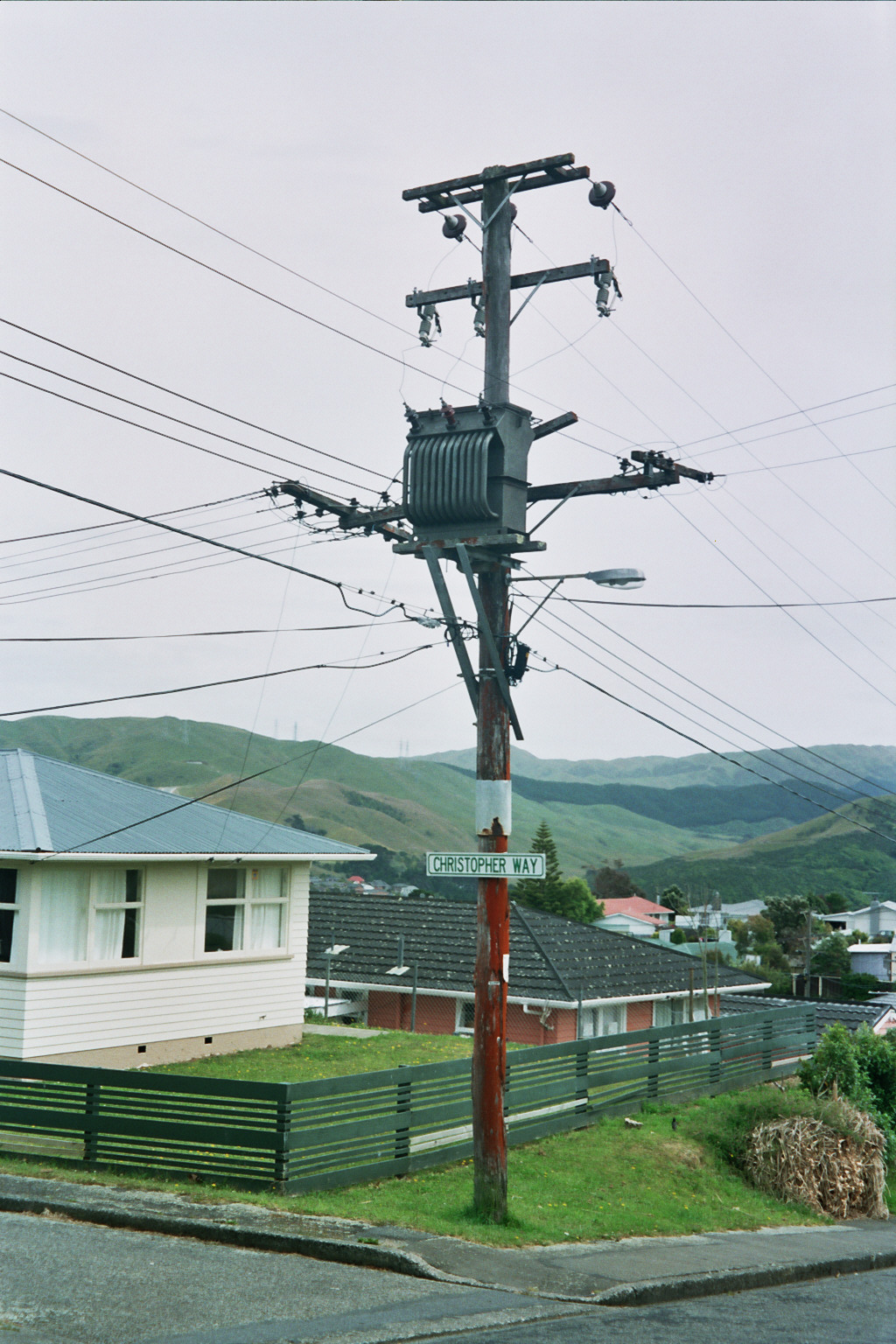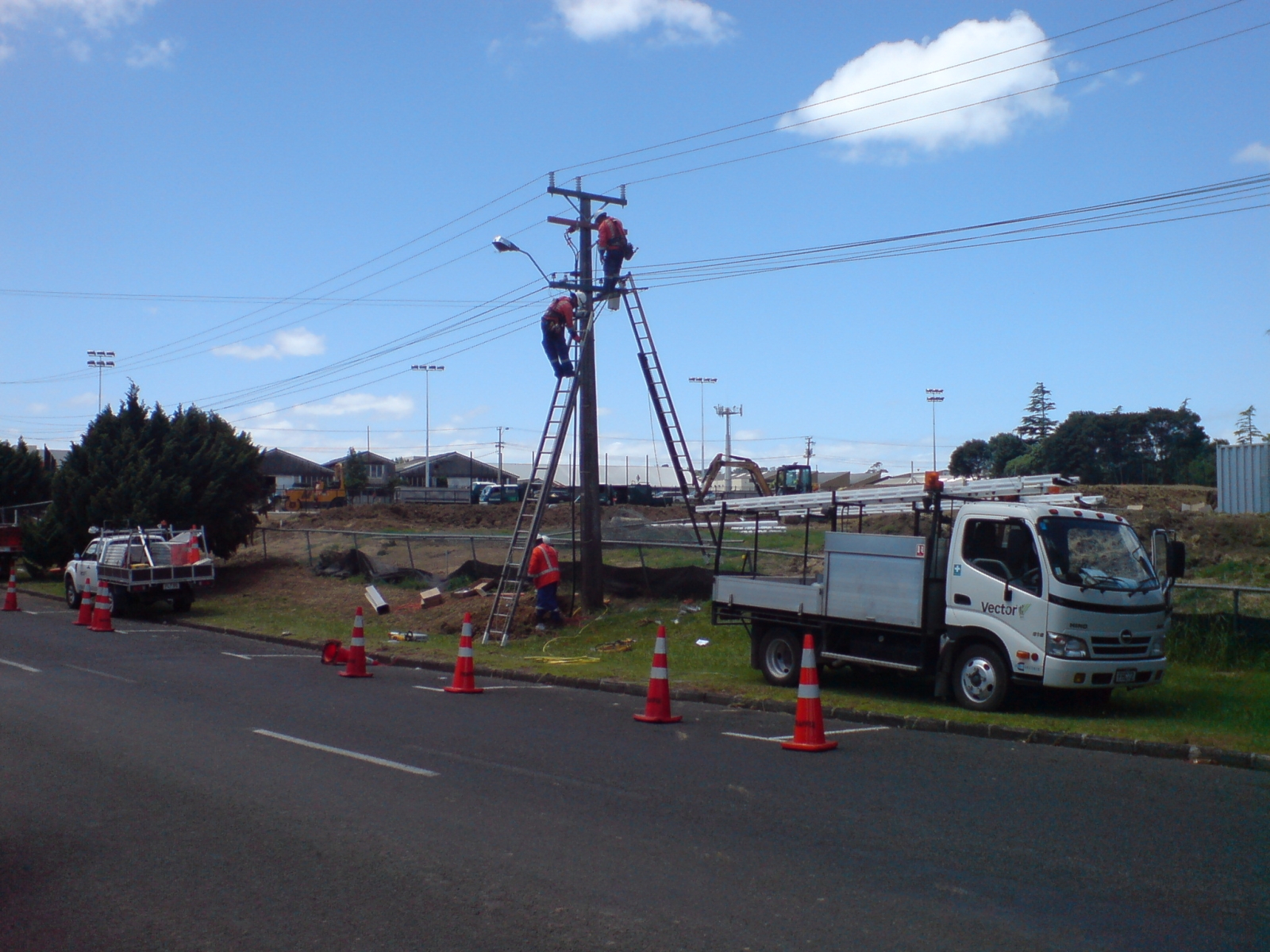|
Wellington Electricity
Wellington Electricity, registered as Wellington Electricity Lines Limited, is an electricity distribution company, based in Wellington, New Zealand. Wellington Electricity supplies electricity to approximately 400,000 consumers through over 164,500 installation connection points (ICPs) in its network that covers the Wellington city, Porirua and the Hutt Valley regions. Ownership Cheung Kong Infrastructure Holdings Limited and Power Assets Holdings Limited together own 100 per cent of Wellington Electricity, with both companies being members of the Cheung Kong group of companies and listed on the Hong Kong Stock Exchange (HKEx). Distribution network Wellington Electricity uses a 33 kV sub-transmission network, with 11 kV high-voltage distribution and 230/400 V low-voltage distribution. The network comprises a high percentage of underground cabling, with 66% of the sub-transmission circuits being cabled. Wellington Electricity also owned and operated seve ... [...More Info...] [...Related Items...] OR: [Wikipedia] [Google] [Baidu] |
Vector Limited
Vector Limited is an electricity and gas distribution company in Auckland, New Zealand. It is the national number one provider of electricity distribution, number one provider of electricity and gas metering and number two wholesaler of LPG. It also owns a fibre optic cable network. Entrust, formerly named Auckland Energy Consumer Trust, owns around three quarters of its shares, and had full ownership until 2005. History Auckland Electric Power Board The Auckland Electric Power Board (AEPB) was formed in 1922, taking over the generation, distribution and supply of electricity from several local councils. All electricity was generated locally until 1925 when the transmission line from Horahora Power Station to Penrose substation was commissioned. The AEPB was connected to the newly completed Arapuni Power Station in 1929. Under the government reforms introduced by the Energy Companies Act 1992, the Auckland Electric Power Board was corporatised and became Mercury Energy ... [...More Info...] [...Related Items...] OR: [Wikipedia] [Google] [Baidu] |
Upper Hutt
Upper Hutt ( mi, Te Awa Kairangi ki Uta) is a city in the Wellington Region of New Zealand and one of the four cities that constitute the Wellington metropolitan area. Geography The Upper Hutt city centre lies approximately 26 km north-east of Wellington. While the main areas of urban development lie along the Te Awa Kairangi / Hutt River valley floor, the city extends to the top of the Remutaka Pass to the north-east and into the Akatarawa Valley and rough hill-country of the Akatarawa ranges to the north and north-west, almost reaching the Kapiti Coast close to Paekākāriki. Centred on the upper (northern) valley of Te Awa Kairangi / Hutt River, which flows north-east to south-west on its way to Wellington harbour, the flat land widens briefly into a 2500-m-wide floodplain between the Remutaka and Akatarawa Ranges before constricting nine kilometres further downstream at the Taitā Gorge, which separates Upper Hutt from its neighbour, Lower Hutt. The city's main ... [...More Info...] [...Related Items...] OR: [Wikipedia] [Google] [Baidu] |
Electricity Sector In New Zealand
The electricity sector in New Zealand uses mainly renewable energy, such as hydropower, geothermal power and increasingly wind energy. , 82% of electricity is generated from renewable sources, making New Zealand one of the countries with the lowest carbon dioxide emissions from electricity generation. Electricity demand grew by an average of 2.1% per year from 1974 to 2010 but decreased by 1.2% from 2010 to 2013. The electricity market is regulated by the Electricity Authority. Electricity lines businesses, including Transpower and the distribution lines companies, are regulated by the Commerce Commission. Control is also exerted by the minister of energy in the New Zealand Cabinet, though the minister for state-owned enterprises and the minister for climate change also have some powers by virtue of their positions and policy influence in the government. History In New Zealand electricity was first generated within factories for internal use. The first generation plant where ... [...More Info...] [...Related Items...] OR: [Wikipedia] [Google] [Baidu] |
SAIFI
The Muslim Saifi, or sometimes pronounced Barhai are Muslim community, found in North India. They are also known as Saifi which denotes the Muslim sub-caste of blacksmiths and carpenters. A small number are also found in the Terai region of Nepal. The community is also sometimes referred to as Saifi or Tarkhan descendent of Tarkhan Dynasty of Sindh Pakistan.''People of India Uttar Pradesh'', Volume XLII Part One, edited by A Hasan & J C Das, pp. 190-193. Origin The community derive their name from the word ''barhai'', which means carpenter in Hindi. According to their own traditions, they are descended from early Muslim settlers to India. It is however likely, that they are immigrant from the Central Asia.They are also known as Tarkhan. In Uttar Pradesh, the Barhai/ Saifi have two sub-divisions, the Tarkhan and the Multani or immigrants from Multan known as Multani Lohar Each of these two groups in endogamous. They are found mainly in the Doab and Rohilkhand regions, and s ... [...More Info...] [...Related Items...] OR: [Wikipedia] [Google] [Baidu] |
SAIDI
A Ṣa‘īdī (, Coptic: ⲣⲉⲙⲣⲏⲥ ''Remris'') is a person from Upper Egypt (, Coptic: ⲙⲁⲣⲏⲥ ''Maris''). Etymology The word literally means "from Ṣa‘īd" (i.e. Upper Egypt), and can also refer to a form of music originating there, or to the dialect spoken by Sa‘idis. The Arabic word ''Ṣa‘īd'', as a geographical term, means "highland, upland, plateau". The suffix "-i" denotes the adjective. The word ''Ṣa‘īdi'' is pronounced in the dialect itself as or and the plural is or , while pronounced in Egyptian Arabic (Northern Egyptian) as and the plural is . In the Sahidic (Upper Egyptian) dialect of Coptic, the name for a person from Upper Egypt is (pronounced rem/rīs) meaning "person of the South" or (pronounced rem/pma/rīs or rem/ma/rīs) "person of (the) place of the south (i.e. Upper Egypt)". Stereotypes and jokes Ṣa‘īdis and their dialect are the subject of numerous Egyptian stereotypes and ethnic jokes, mainly from the up ... [...More Info...] [...Related Items...] OR: [Wikipedia] [Google] [Baidu] |
Thorndon, New Zealand
Thorndon is a historic inner suburb of Wellington, the capital city of New Zealand. Because the suburb is relatively level compared to the hilly terrain elsewhere in Wellington it contained Wellington's elite residential area until its best was destroyed in the 1960s by Wellington Urban Motorway, a new motorway and the erection of tall office buildings on the sites of its Molesworth Street, Wellington, Molesworth Street retail and service businesses. Before Thorndon was Thorndon it was Haukawakawa and in 1824 Pipitea Pā was settled at its southern end. More recently Pipitea Marae and the land under the Government Centre have been separated from Thorndon and the name Pipitea returned to them in 2003. The reclamations have been included in the new suburb Pipitea, New Zealand, Pipitea. Thorndon combines the home of government and upmarket residential accommodation. It is located at the northern end of the Wellington Central, Wellington, Central Business District. History Pipitea ... [...More Info...] [...Related Items...] OR: [Wikipedia] [Google] [Baidu] |
Wellington Hospital, New Zealand
Wellington Hospital, also known as Wellington Regional Hospital, is the main hospital in Wellington, New Zealand, located south of the city centre in the suburb of Newtown. It is the main hospital run by Capital & Coast District Health Board (C&CDHB), which serves Wellington City, Porirua and the Kapiti Coast District. Lower Hutt and Upper Hutt have a separate district health board, the Hutt Valley DHB, and a separate hospital, Hutt Hospital, in the Lower Hutt suburb of Boulcott. Wellington Hospital is the Wellington Region's main tertiary hospital, with services such as complex specialist and acute (or "tertiary") services, procedures and treatments such as the Intensive Care Unit, cardiac surgery, cancer care, cardiology procedures, neurosurgery, and renal care. The hospital is a tertiary referral centre for the lower half of the North Island and the top of the South Island (specifically the Hawke's Bay, Manawatu-Wanganui, Wellington, Tasman, Nelson and Marlborough regions ... [...More Info...] [...Related Items...] OR: [Wikipedia] [Google] [Baidu] |
Landfill Gas
Landfill gas is a mix of different gases created by the action of microorganisms within a landfill as they decompose organic waste, including for example, food waste and paper waste. Landfill gas is approximately forty to sixty percent methane, with the remainder being mostly carbon dioxide. Trace amounts of other volatile organic compounds (VOCs) comprise the remainder (<1%). These trace gases include a large array of species, mainly simple s.Hans-Jürgen Ehrig, Hans-Joachim Schneider and Volkmar Gossow "Waste, 7. Deposition" in Ullmann's Encyclopedia of Industrial Chemistry, 2011, Wiley-VCH, Weinheim. Landfill gases have an influence on . The major components are [...More Info...] [...Related Items...] OR: [Wikipedia] [Google] [Baidu] |
Wilton, New Zealand
Wilton is a small suburb in Wellington. It is best known for Otari-Wilton's Bush, a large reserve that is situated in the suburb. Otari-Wilton's bush is the only public botanic garden in New Zealand dedicated solely to native plants. It features 14 km of walking tracks and a 'canopy walkway'. The canopy walkway is a raised walkway that provides a unique chance to view life in, and from, the top level of trees such as mature tawa, rewarewa and hinau. History Job Wilton was a sheep farmer; in 1861 he had a flock of 165 sheep, to be washed in the Kaiwharawhara Stream before shearing. He subdivided his farm in 1915, but Wilton was semi-rural to the 1930s with little housing development until after World War II. A Sunday trip to Wilton's Bush and Chapman's Gardens (now the Otari Plant Museum) required walking from the Wadestown tram terminus. From 1944 a feeder bus ran from the terminus. A school opened in 1956. Wilton House in Blackbridge Road was built for Courtenay Place ch ... [...More Info...] [...Related Items...] OR: [Wikipedia] [Google] [Baidu] |
Kaiwharawhara
Kaiwharawhara is an urban seaside suburb of Wellington in New Zealand's North Island. It is located north of the centre of the city on the western shore of Wellington Harbour, where the Kaiwharawhara Stream reaches the sea from its headwaters in Karori. It is a largely commercial and industrial area and thus has little residential population. A recent housing development up the hillside towards Te Kainga has increased the resident population. Kaiwharawhara contains some major transport infrastructure. Both State Highway 1 and the North Island Main Trunk railway pass through Kaiwharawhara on their routes from central Wellington northwards. Due to its waterfront location, Kaiwharawhara also has shipping activity, with the Wellington Interislander Ferry terminal located on the boundary of Kaiwharawhara and Pipitea. Kaiwharawhara Railway Station was closed in 2013, and the suburb is now served by buses. Just north of the station the Wairarapa Line (including the commuter Hutt V ... [...More Info...] [...Related Items...] OR: [Wikipedia] [Google] [Baidu] |
Linden, New Zealand
Linden is a part of Tawa, the northernmost suburb of Wellington, New Zealand. Linden lies at the northern end of Tawa, just south of the city of Porirua. Demographics Linden statistical area covers . It had an estimated population of as of with a population density of people per km2. Linden had a population of 3,258 at the 2018 New Zealand census, an increase of 213 people (7.0%) since the 2013 census, and an increase of 444 people (15.8%) since the 2006 census. There were 1,152 households. There were 1,608 males and 1,647 females, giving a sex ratio of 0.98 males per female. The median age was 34 years (compared with 37.4 years nationally), with 681 people (20.9%) aged under 15 years, 735 (22.6%) aged 15 to 29, 1,506 (46.2%) aged 30 to 64, and 339 (10.4%) aged 65 or older. Ethnicities were 59.3% European/Pākehā, 15.3% Māori, 12.5% Pacific peoples, 24.6% Asian, and 3.6% other ethnicities (totals add to more than 100% since people could identify with multiple ethniciti ... [...More Info...] [...Related Items...] OR: [Wikipedia] [Google] [Baidu] |




